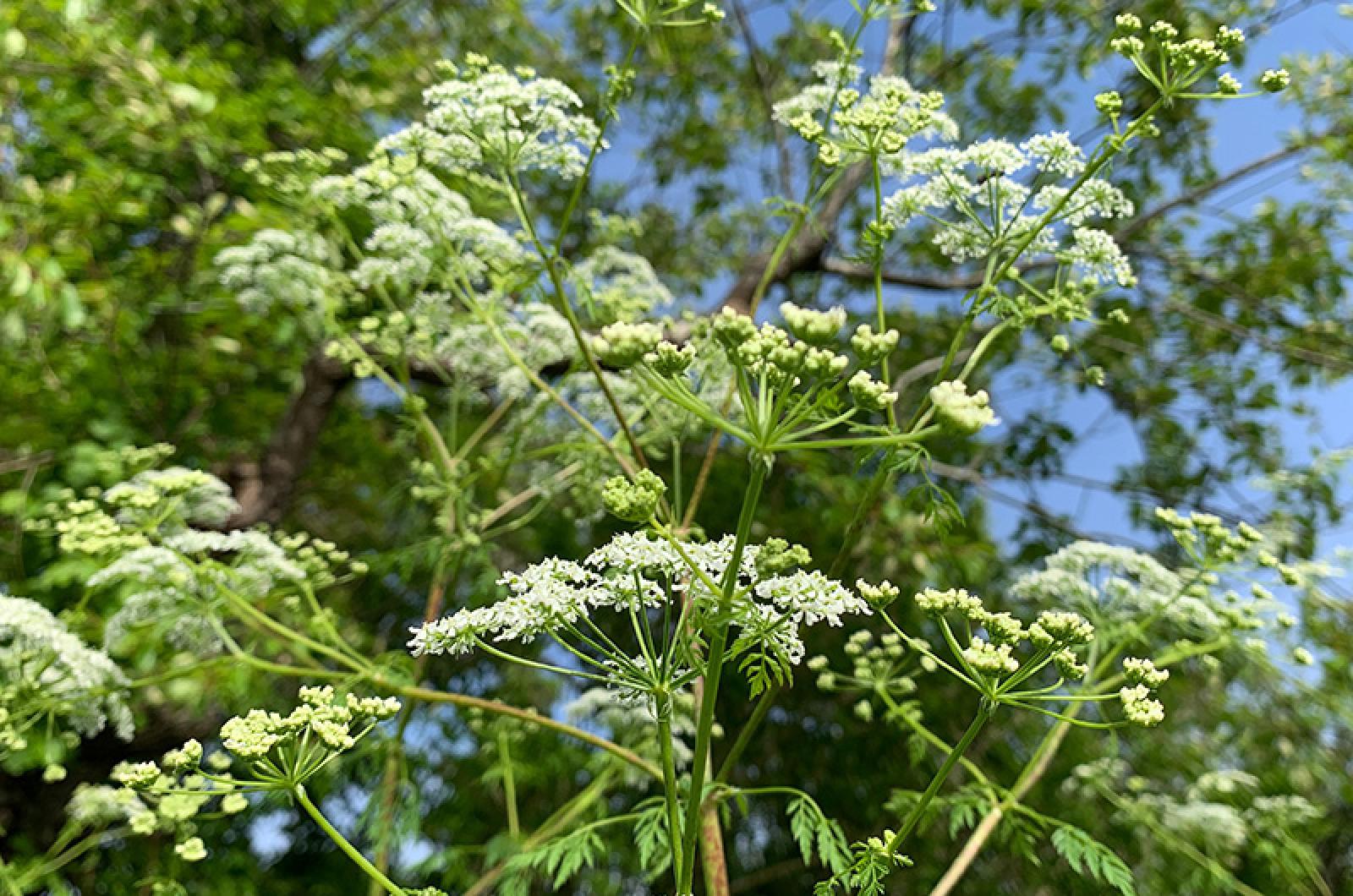Stay upwind.
This great suggestion came not from skunk hunters but from plant hunters Greg Palermo and Margaret Curtin, who issued the warning after finding a killer plant on a Chilmark roadside. It seems that there is a plethora of this sort of advice when it comes to poison hemlock.
Poison hemlock on the Vineyard? Yes, but just a little bit.
If you are downwind, breathing in the pollen of this poisonous plant can cause distress and it is definitely a touch-me-not since contact with skin can cause irritation. Another warning got very specific when it instructed the young (and young at heart) to “not use its hollow stems as pea-shooters.”
Poison hemlock, also known as beaver poison, poison parsley, devil’s flower, break-your-mother’s-heart, and scabby hands, is found in a very limited number of locations on the Island. The Flora of Martha’s Vineyard, though dated, lists it as rare with only one known Chilmark location in 1999. It is impossible to know if this recent sighting was the same location reported, or if it is spreading.
Either way, it is wise to avoid poison hemlock. Its name says it all and should be warning enough, even if you are not familiar with its reputation and history.
Famously known as the plant that killed Socrates, hemlock doesn’t mess around, nor does it go straight to the heart of things: it insidiously kills by attacking the central nervous system rather than the cardiovascular one.
Nicander, an army doctor in Ancient Rome, included this verse about how hemlock kills in a poem about poisons:
“Take note of the noxious draught which is hemlock, for this drink assuredly looses disaster upon the head bringing the darkness of night: the eyes roll, and men roam the streets with tottering steps and crawling upon their hands; a terrible choking blocks the lower throat and the narrow passage of the windpipe, the extremities grow cold; and in the limbs the stout arteries are contracted; for a short while the victim draws breath like one swooning, and his spirit beholds Hades.“
Though this sounds terrible, death from its toxicity has been described by different sources as gentle and horrible. Hemlock kills slowly and victims can suffer for up to three days before they expire (Socrates’ death was mercifully quick). It must be all in the perspective since the ending is necessarily described by the observers rather than the deceased.
Socrates was reputed to have chosen hemlock tea as the method of his death after being accused of “corrupting the youth of Athens” by his speeches and writings that espoused his belief in democratic principles, logic, and questioning authority. He could have avoided this fate by accepting banishment instead but refused to deny his ideals.
Some say that it wasn’t actually hemlock that killed Socrates. But the two are forever connected in both story and plant since hemlock’s hollow stems are called “blood of Socrates” due to the appearance of purple speckles on them.
Many of us–and other less philosophical creatures–should avoid hemlock, including pets and livestock. Given a deadly dose, mice last only about 10 minutes before succumbing, so be careful of your critters. Birds are believed to be able to survive this poisoning, but pass along the toxicity in their bodies to their predators. Some Lepidoptera (butterflies and moths) larvae can consume the plant safely.
Hemlock, oddly enough, is related to the edible dill, celery, fennel, parsley and anise, and it closely resembles Queen Anne’s lace or wild carrot. Stories have been told of inadvertent death because of the confusion between the two.
Our own Cynthia Riggs wrote a novel called Shooting Star involving the poison plant, and Shakespeare referred to its deadly properties dramatically in both Macbeth and King Lear. You might avoid Socrates’ choice and the ensuing drama altogether by brushing up on the characteristics of this innocent-looking but deadly denizen of the woods and roadsides.
Suzan Bellincampi is director of the Felix Neck Wildlife Sanctuary in Edgartown, and author of Martha’s Vineyard: A Field Guide to Island Nature and The Nature of Martha’s Vineyard.







Comments
Comment policy »